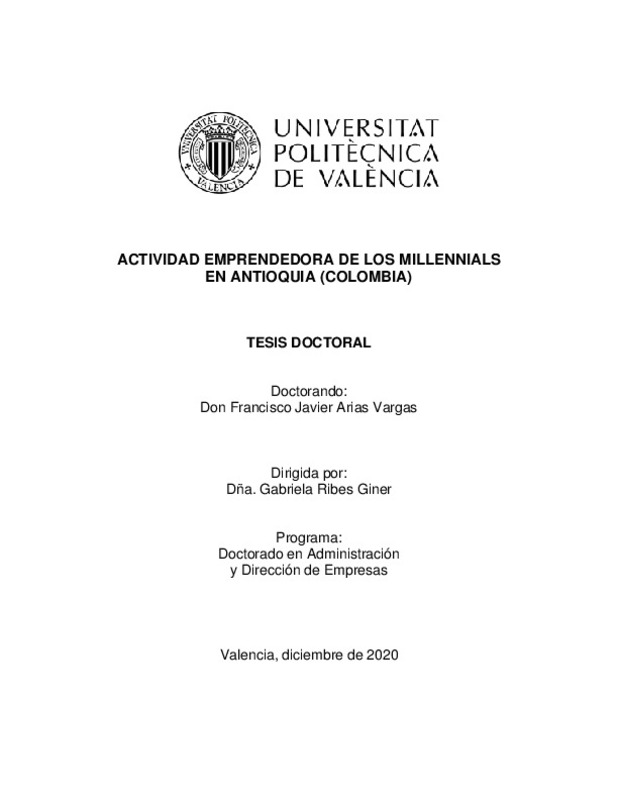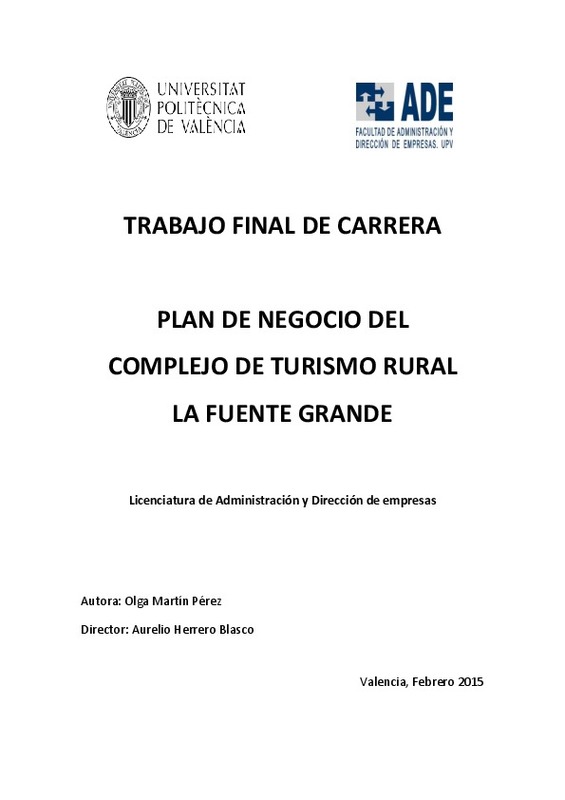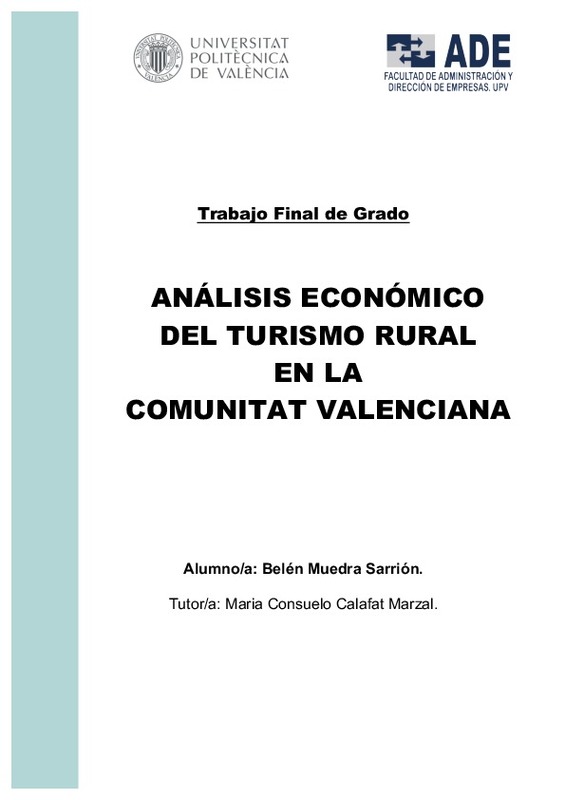JavaScript is disabled for your browser. Some features of this site may not work without it.
Buscar en RiuNet
Listar
Mi cuenta
Estadísticas
Ayuda RiuNet
Admin. UPV
Núcleos rurales en riesgo de despoblación. Estrategias de conservación y supervivencia desde la Arquitectura
Mostrar el registro sencillo del ítem
Ficheros en el ítem
| dc.contributor.advisor | Baró Zarzo, José Luis
|
es_ES |
| dc.contributor.author | Martínez Martínez, Nydia
|
es_ES |
| dc.date.accessioned | 2021-02-22T10:15:25Z | |
| dc.date.available | 2021-02-22T10:15:25Z | |
| dc.date.created | 2020-07-17 | |
| dc.date.issued | 2021-02-22 | es_ES |
| dc.identifier.uri | http://hdl.handle.net/10251/162021 | |
| dc.description.abstract | [ES] En España encontramos una situación desoladora, la gran mayoría de pueblos y aldeas del país, sobre todo del interior peninsular, se hallan en condiciones de abandono total o en riesgo de ello. Diferentes episodios históricos ocurridos en la Península, han traído consigo esta consecuencia de abandono de poblados y aldeas, al igual que la creación de nuevos núcleos de población. Desde la colonización fenicia y griega, la siguiente conquista musulmana, la consecuente Reconquista cristiana y la posterior Guerra Civil Española, el país ha sufrido numerosas situaciones de despoblamiento a las que ha debido enfrentarse cara a cara y buscar una solución viable para poder constituir nuevos núcleos de población. En los siglos XVIII y XIX, diferentes teóricos utópicos como Ledoux, Owen, Fourier, Godin y Howard, ofrecieron una perspectiva sobre cómo debería ser una ciudad idílica, o cómo se debería hacer ciudad, atendiendo no solo al ámbito poblacional, sino también al social y medioambiental. Actualmente, las perspectivas no son halagüeñas, pues poco o nada se está haciendo para paliar el inminente desastre. La investigación llevada a cabo en este trabajo busca recoger una serie de casos donde se ha intervenido, con mayor o menor resultado, de manera que aporten una visión del panorama actual y unas primeras líneas guía (desde el punto de vista arquitectónico), para el posible desarrollo de estas comunidades en riesgo de abandono. Se trata no solo de devolver la vida a estos enclaves en riesgo de exterminio, sino de hacerlo adecuadamente. Es decir, intentando llevar a cabo el mayor número posible de Objetivos de Desarrollo Sostenible y conociendo el lugar, su historia, materiales de sus construcciones y su forma de vida. Para ello, es necesario mantener unas formas y composiciones adecuadas, conservando así la esencia propia inicial de cada lugar en concreto; al igual que asegurar unas condiciones salubres y agua potable (Objetivo 6); apostar por energías renovables y ciudades sostenibles (Objetivos 7 y 11); un fácil acceso a recursos primarios como medicina, alimentación, educación, etc. (Objetivos 3 y 4); crear comunidades donde haya posibilidad de trabajo, intentando una inclusión en cuanto al género femenino se refiere en este ámbito (Objetivos 8 y 10), sobre todo para edades comprendidas entre los 20-45 años, pues es el motivo por el que la mayoría de los jóvenes deciden marchar a ciudades más grandes y mejor equipadas; utilizar los avances tecnológicos y aplicar dichas mejoras en estos nuevos o ya existentes núcleos poblacionales para reducir los consumos de energía (Objetivos 9 y 12); y trabajar juntos en comunidad (Objetivo 17) para lograr así, entre todos, un resultado de mayor envergadura y más efectivo; todo ello respetando el medioambiente y el entorno en el que se interviene (Objetivos 13 y 15). En definitiva, promover y difundir mediante las distintas intervenciones, los objetivos de desarrollo sostenible. Algunos de los casos investigados, como las obras llevadas a cabo en Albarracín por la Administración pública, particulares y la Fundación Santa María de Albarracín; en Más Blanco por el grupo valenciano Recartografías y en el Rincón de Ademúz por los arquitectos Camila Mileto y Fernando Vegás, han conseguido revivir estos pequeños núcleos en riesgo de abandono inminente, apostando por la conservación, la historia y la cultura de estos. En estos últimos casos, la colaboración de la ciudadanía ha sido un pilar muy importante y determinante para llevar a cabo los diferentes proyectos. Con la investigación realizada se pretende por tanto alcanzar un abanico de posibles puntos de partida, desde el punto de vista arquitectónico, mediante los cuales sea posible frenar este fenómeno del despoblamiento y promover una solución viable y sostenible para cada caso particular. | es_ES |
| dc.description.abstract | [EN] In Spain we find a desolate situation, most of small towns and villages in the country, especially the interior ones, are in conditions of total abandonment or at risk of it. Different historical episodes occurred in the Peninsula, have brought about this consequence of abandonment of towns and villages, as well as the creation of new population centers. Since the Phoenician and Greek colonization, later the Muslim one, the subsequent Christian Reconquest and the next Spanish Civil War, the country has suffered numerous depopulation situations that it has had to face to face and seek a viable solution to be able to constitute new nuclei of population. In the 18th and 19th centuries, different utopian theorists such as Ledoux, Owen, Fourier, Godin and Howard, offered a perspective on how an idyllic city should be, or how it should be made a city, attending not only to the population, but also to the social sphere and environmental. Currently, the prospects are not rosy, as little or nothing is being done to alleviate the impending disaster. The research carried out in this work seeks to collect a series of cases where interventions have been carried out, with greater or lesser results, so that they provide a vision of the current panorama and some first guidelines (from the architectural point of view), for the possible development of these communities at risk of abandonment. It is not only about giving life to these enclaves at risk of extermination, but doing it properly. In other words, trying to carry out as many Sustainable Development Goals as possible and getting to know the place, its history, its construction materials and its way of life. For this, it is necessary to maintain adequate shapes and composition, thus preserving the initial essence of each specific place; as well as ensuring safe conditions and clean water (Goal 6); betting on renewable energy and sustainable cities (Objectives 7 and 11); easy access to primary resources such as medicine, food, education (Objectives 3 and 4); create communities where there is a possibility of work, trying to include women in this area (Objectives 8 and 10), especially for ages between 20-45 years, as this is the reason why the majority of young people decide to go to bigger and better equipped cities; use the advances technology and apply these improvements in these new or existing population centers to reduce energy consumption (Objectives 9 and 12); and work together in community (Goal 17) to achieve, together, a larger and more effective result; all respecting the environment and the environment in which it operates (Objectives 13 and 15). In short, to promote and disseminate, through the different interventions, the objectives of sustainable development. Some of the cases investigated, such as the works carried out in Albarracín by the public administration, individuals and the Fundación Santa María de Albarracín; In Mas Blanco by the Valencian group Recartographies and in the Rincón de Ademúz by the architects Camila Mileto and Fernando Vegás, they have managed to revive these small towns at risk of imminent abandonment, betting on their conservation, history and culture. In these latter cases, the collaboration of citizens has been a very important and determining pillar for carrying out the different projects. With the research carried out, the aim is therefore to reach a range of possible starting points, from the architectural point of view, by means of which it is possible to stop this phenomenon of depopulation and promote a viable and sustainable solution for each particular case. | es_ES |
| dc.format.extent | 76 | es_ES |
| dc.language | Español | es_ES |
| dc.publisher | Universitat Politècnica de València | es_ES |
| dc.rights | Reserva de todos los derechos | es_ES |
| dc.subject | España vaciada | es_ES |
| dc.subject | Despoblamiento | es_ES |
| dc.subject | Ecoaldeas | es_ES |
| dc.subject | Éxodo rural | es_ES |
| dc.subject | Patrimonio rural | es_ES |
| dc.subject | Land art | es_ES |
| dc.subject | España despoblada | es_ES |
| dc.subject | Repoblación | es_ES |
| dc.subject | Neo-ruralización | es_ES |
| dc.subject | Emprendimiento rural | es_ES |
| dc.subject | Emigración | es_ES |
| dc.subject | Ciudad sostenible | es_ES |
| dc.subject | España rural | es_ES |
| dc.subject | Spain emptied | es_ES |
| dc.subject | Depopulation | es_ES |
| dc.subject | Ecovillages | es_ES |
| dc.subject | Rural exodus | es_ES |
| dc.subject | Rural heritage | es_ES |
| dc.subject | Depopulated Spain | es_ES |
| dc.subject | Resettlement | es_ES |
| dc.subject | Neo-ruralization | es_ES |
| dc.subject | Rural entrepreneurship | es_ES |
| dc.subject | Emigration | es_ES |
| dc.subject | Sustainable city | es_ES |
| dc.subject | Rural Spain | es_ES |
| dc.subject | Autoabastecimiento | es_ES |
| dc.subject | Self-sufficiency | es_ES |
| dc.subject.classification | COMPOSICION ARQUITECTONICA | es_ES |
| dc.subject.other | Grado en Fundamentos de la Arquitectura-Grau en Fonaments de l'Arquitectura | es_ES |
| dc.title | Núcleos rurales en riesgo de despoblación. Estrategias de conservación y supervivencia desde la Arquitectura | es_ES |
| dc.type | Proyecto/Trabajo fin de carrera/grado | es_ES |
| dc.rights.accessRights | Cerrado | es_ES |
| dc.description.bibliographicCitation | Martínez Martínez, N. (2020). Núcleos rurales en riesgo de despoblación. Estrategias de conservación y supervivencia desde la Arquitectura. Universitat Politècnica de València. http://hdl.handle.net/10251/162021 | es_ES |
| dc.description.accrualMethod | TFGM | es_ES |
| dc.relation.pasarela | TFGM\110145 | es_ES |
Este ítem aparece en la(s) siguiente(s) colección(ones)
-
ETSA - Trabajos académicos [4687]
Escuela Técnica Superior de Arquitectura




![[Cerrado]](/themes/UPV/images/candado.png)




